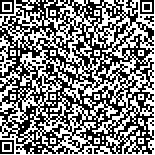| 摘要: |
| 将鼠尾藻(Sargassum thunbergii)暴露在不同质量浓度锌和镉溶液里40 d,以及暴露20 d后,移入自然海水恢复20 d,分析了藻体内金属离子含量的变化。富集实验结果表明,鼠尾藻积累金属离子的量和暴露溶液金属质量浓度正相关、与暴露时间具有线性关系;暴露3 d,藻体的金属离子含量(除了暴露在Cd2+质量浓度为0.1 mg/L处理组)均显著增加;在Zn2+处理组,溶液里Zn2+质量浓度越大,线性关系越显著,而在Cd2+处理组,Cd2+质量浓度5.0 mg/L处理组藻体内Cd2+含量与暴露时间的线性关系则最低。排放试验结果表明,排放20 d后与排放0 d比较,藻体内的金属离子质量浓度均显著降低,但是均显著高于暴露前水平;在Zn2+溶液里,鼠尾藻暴露Zn2+质量浓度0.1 mg/L和Zn2+质量浓度5.0 mg/L 20 d后移入自然海水5 d后,藻体内的Zn2+含量与排放0 d相比显著降低,而在Cd2+溶液里,藻体排放5 d后,藻体内的Cd2+含量与排放0 d相比均显著降低。最终结果表明,鼠尾藻潜在地可作为一种指示生物,用于监测海洋环境重金属污染状况。同时,鼠尾藻对Zn2+和Cd2+具有较强的富集能力,可以利用鼠尾藻修复受重金属污染的海洋水体,尤其是锌的污染。 |
| 关键词: 鼠尾藻(Sargassum thunbergii) 重金属 富集 排放 指示生物 生物修复 |
| DOI: |
| 分类号: |
| 基金项目:基金项目:国家863计划资助项目(2006AA10A416, 2006AA10Z409);国家十一五科技支撑计划资助项目(2006BAD09A01);国家海洋公益性行业科研专项课题(200805069);山东省科技攻关计划资助项目(2006GG2205011) |
|
| Study on accumulation and degradation of heavy metals by the Brown alga Sargassum thunbergii |
|
WU Hai-yi,ZHAN Dong-mei,LIU Hong-jun,DING Gang,LIU Wei,LI Mei-zhen
|
| Abstract: |
| In order to measure the accumulation and recovery of Sargassum thunbergii in heavy metal exposure, Sargassum thunbergii was exposed in different concentrations of Zn and Cd solutions for 40 days, in the other group, it was treated in the solutions for 20 days then transferred into natural seawaters. The results showed, for accumulation assay, the metal content in vivo is a positive correlation to concentrations of exposed metal solution, and is linearly relative to exposure time. On the 3rd day, the metal content in vivo increased remarkably, except in 0.1 mg/L Cd2+ treatment; for Zn2+ treatment, the linear correlation is significant as Zn concentration in solution increased, however, in Cd2+ treatment, the linear correlation between metal ions content in vivo and exposure time became lower in 5.0 mg/L Cd2+ treatment compared with other treatments. In degradation assay, the metal ions contents were significantly decreased in both accumulation and degradation groups at 20th day, but they were still higher than that before treatment. In 0.1 mg/L and 5.0 mg/L Zn2+ solutions treatments, Zn2+ contents in vivo after 5 days’ culture in seawater were much lower than that for 0 d degradation. Zn2+ treatment was similar to Cd2+ treatment in all the concentration solutions. All the results proved that Sargassum thunbergii has a high ability to accumulate the Zn2+ and Cd2+ and can be used to restore the sea areas polluted by heavy metals, especially by Zn2+. It might be a potential bioindicator to monitor the heavy metal pollution of seawater. |
| Key words: Sargassum thunbergii heavy metals accumulation degradation bioindicator bioremediation |
